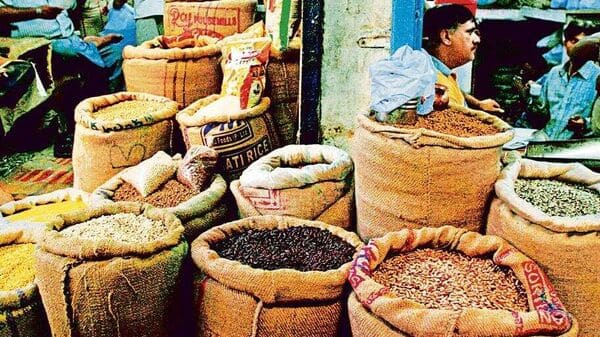Should India worry about shrinking foodgrain reserves?
What is the rationale for buffer stocks?
Buffer stock is generally maintained for essential commodities like wheat, rice and pulses to provide food security through the public distribution system, and ensure that everyone has access to sufficient food for sustenance. It also ensures there are no food shortages during emergencies such as drought and floods, and helps the government run its welfare programmes. They also help the government in facilitating and maintaining price stability and keep food inflation at low levels. In case of a food price rise due to poor market supply, the government releases buffer stocks to bring down prices.
How does the buffer stock system work?
Buffer stocks comprise operational stocks to meet monthly distribution requirement under Targeted Public Distribution System and other welfare schemes) and food security stock reserves for meeting procurement shortfalls. The procurement (obtained at minimum support price), storage and distribution of wheat and paddy are taken care of by the Food Corp. of India, while coarse grains are procured by state government agencies. Besides its own storage capacity, FCI also hires storage capacity from the Central Warehousing Corporation, state warehousing corporations, state agencies and private parties.

View Full Image
What has been the trend in India’s buffer stocks?
Our buffer stocks have been well above required levels. In April, mandatory buffer stock for wheat is 7.6 million metric tonnes (mt), while the actual FCI stock was 18.99 million mt. The surplus was used for the free foodgrain scheme during the pandemic. However, such distribution, and higher global wheat prices are beginning to deplete the wheat buffer.
How did buffer stocks help during covid?
As millions of people lost their livelihoods during the covid lockdown and after, the central government decided to provide 5kg of free foodgrains per person and 1 kg of free whole gram per family. The scheme, originally intended for three months, continues to this day. This food subsidy programme was adopted to expand the food security net and guard against potential starvation. In a way, this was the right usage of surplus food grains which, otherwise, would have been wasted.
What does depletion in buffer stock signal?
The Russia-Ukraine war boosted international foodgrain prices, tempting farmers to sell produce to private traders for export, leading to lower buffer stocks. Thus, the government might not be in a position to continue with the free grain scheme. Depleted buffer stocks could also strain the public distribution system. Also, limited buffer stock limits the ability to stabilize the price level of food grains, that too at a time when food inflation is rising.
Jagadish Shettigar and Pooja Misra are faculty members at BIMTECH
For all the latest world News Click Here

